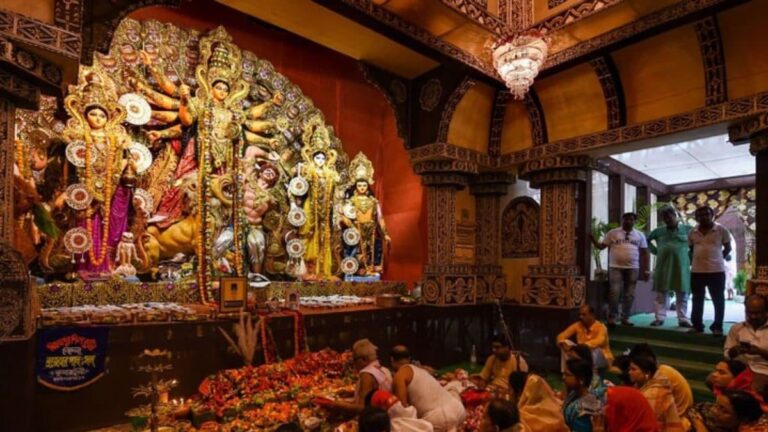Chaitra Navratri, an important Hindu festival, began on April 9, marking the beginning of nine days of reverence and celebration. As Pandit Dayanath Mishra from Purnia said, Maha Ashtami has a special meaning among these nine days.
According to Pandit Mishra, Maha Ashtami, Tuesday, April 16, is a very auspicious day for devotees. It is customary for people who observe this fast to abstain from drinking water and engage in devotional worship of Goddess Durga.
On Maha Ashtami, married women follow a tradition called Koicha and fill pots with various symbolic items to make their wishes come true. It is important to note that the practice of Koicha is not limited to before and after wish fulfillment. It is an ongoing ritual that cultivates blessings from the Goddess.
Pandit Mishra emphasizes the importance of packing khoicha correctly and warns against the misconception of using only rice. He advises to incorporate various ingredients such as betel nut, turmeric, sweets, durva grass, alba rice, liquid, vermilion, etc. These items are carefully bound in red cloth, symbolizing purity and devotion, before being placed in a vase as an offering to the goddess.
The auspicious time to fill the koichha on Maha Ashtami has been designated as Dwitiya Ardha Pahar on Tuesday and devotees can do it between 9 am and 1:30 pm. It is believed that at this timing, your wishes will come true and you will receive blessings from the goddess. The 'mahurat' of Sandy Puja begins at 12:59 pm and ends at 1:47 pm.
Furthermore, Pandit Mishra mentions an important point regarding the qualifications to perform Koicha rituals. He made it clear that it was inappropriate for virgin girls to participate in this practice.
Maha Ashtami, an important day of Chaitra Navratri, has deep meaning for devotees who observe fasts and perform rituals like Koicha to seek blessings from the revered Mother Goddess and fulfillment of heartfelt desires.
First published: April 15, 2024, 11:13 IST


